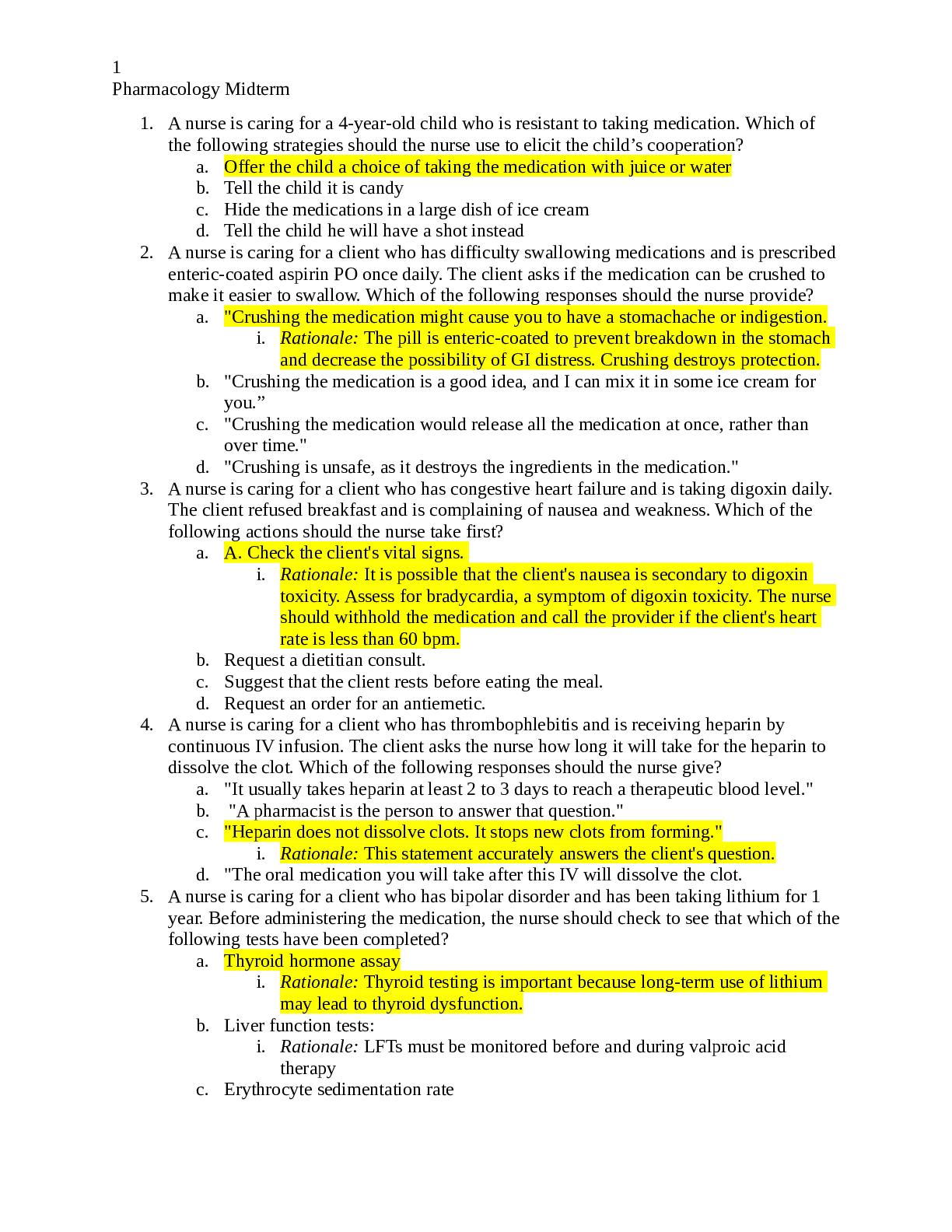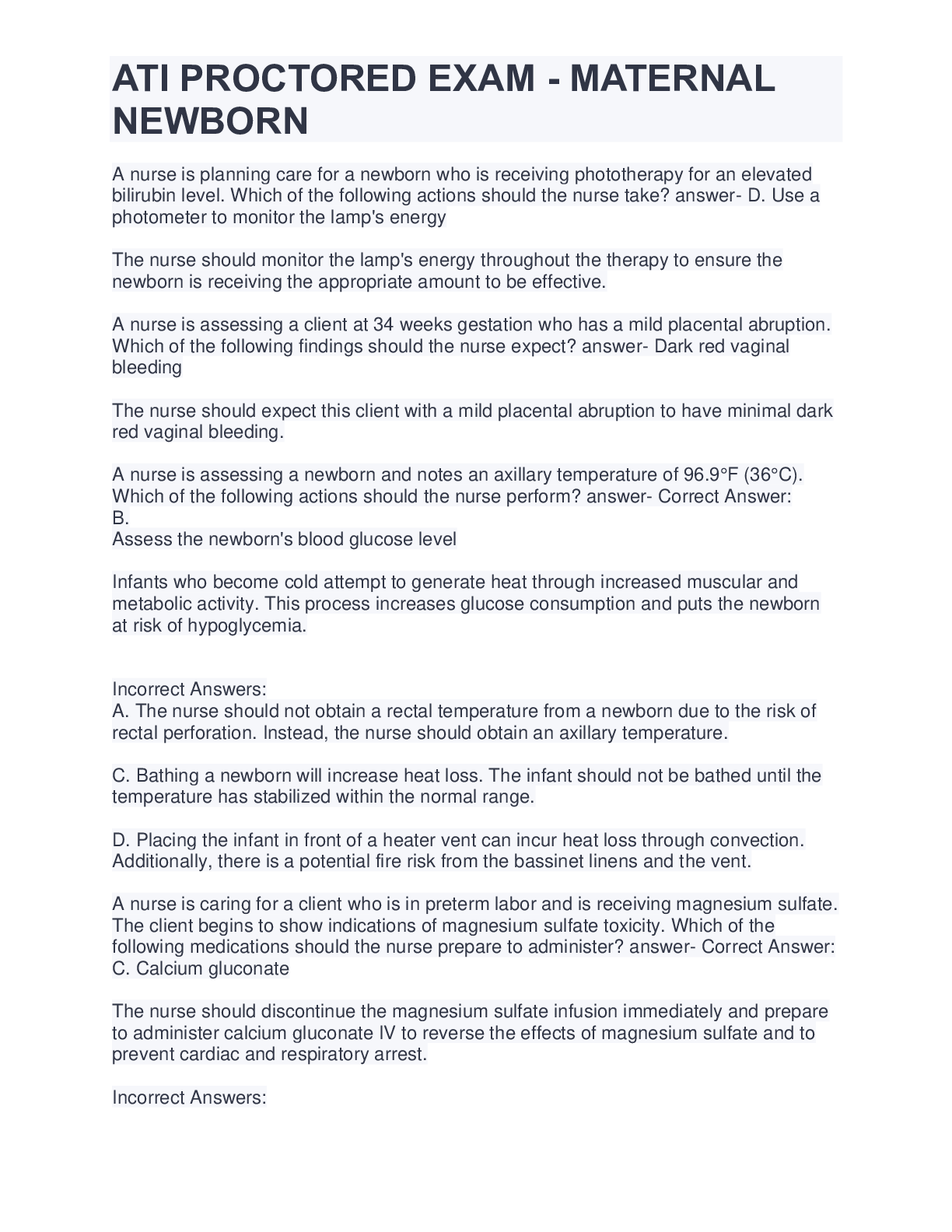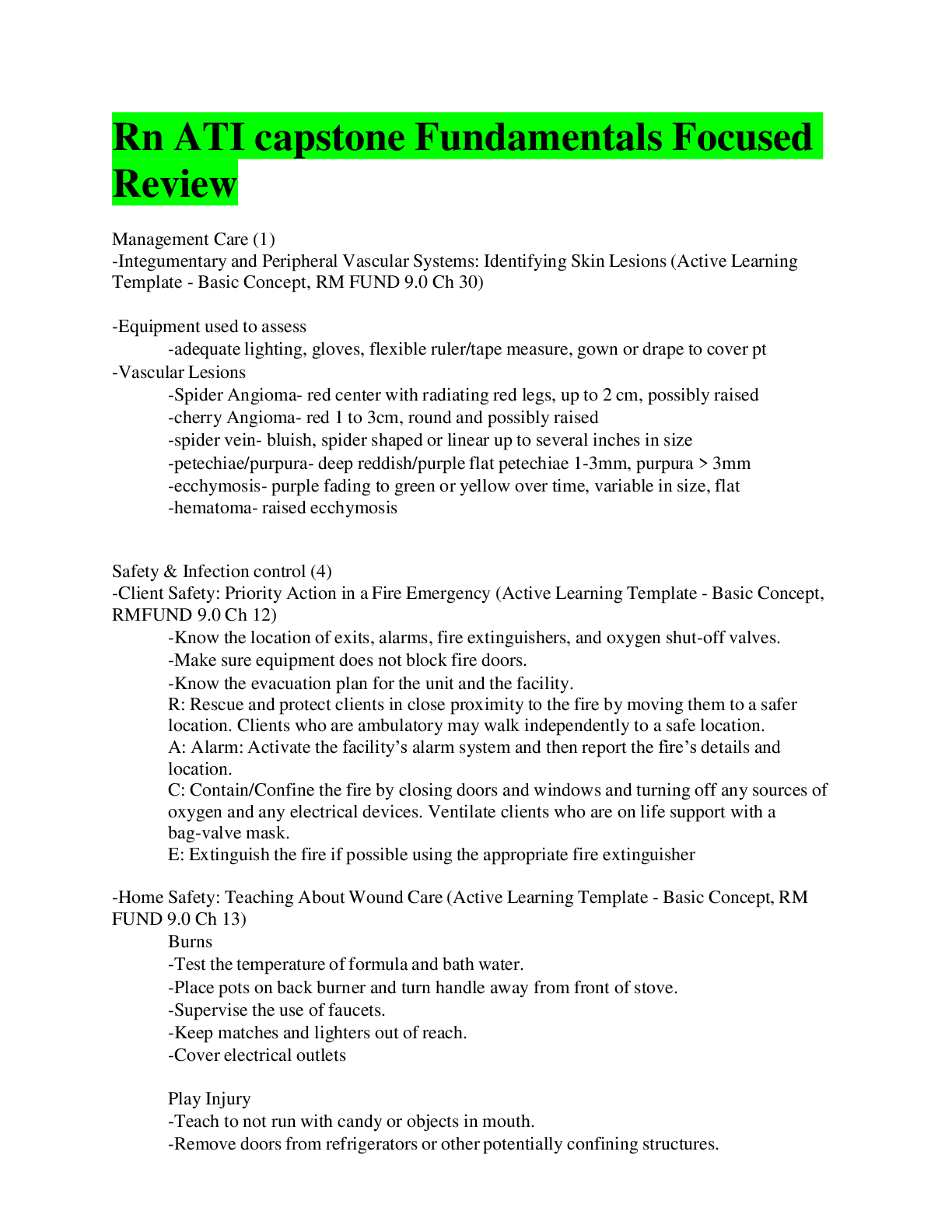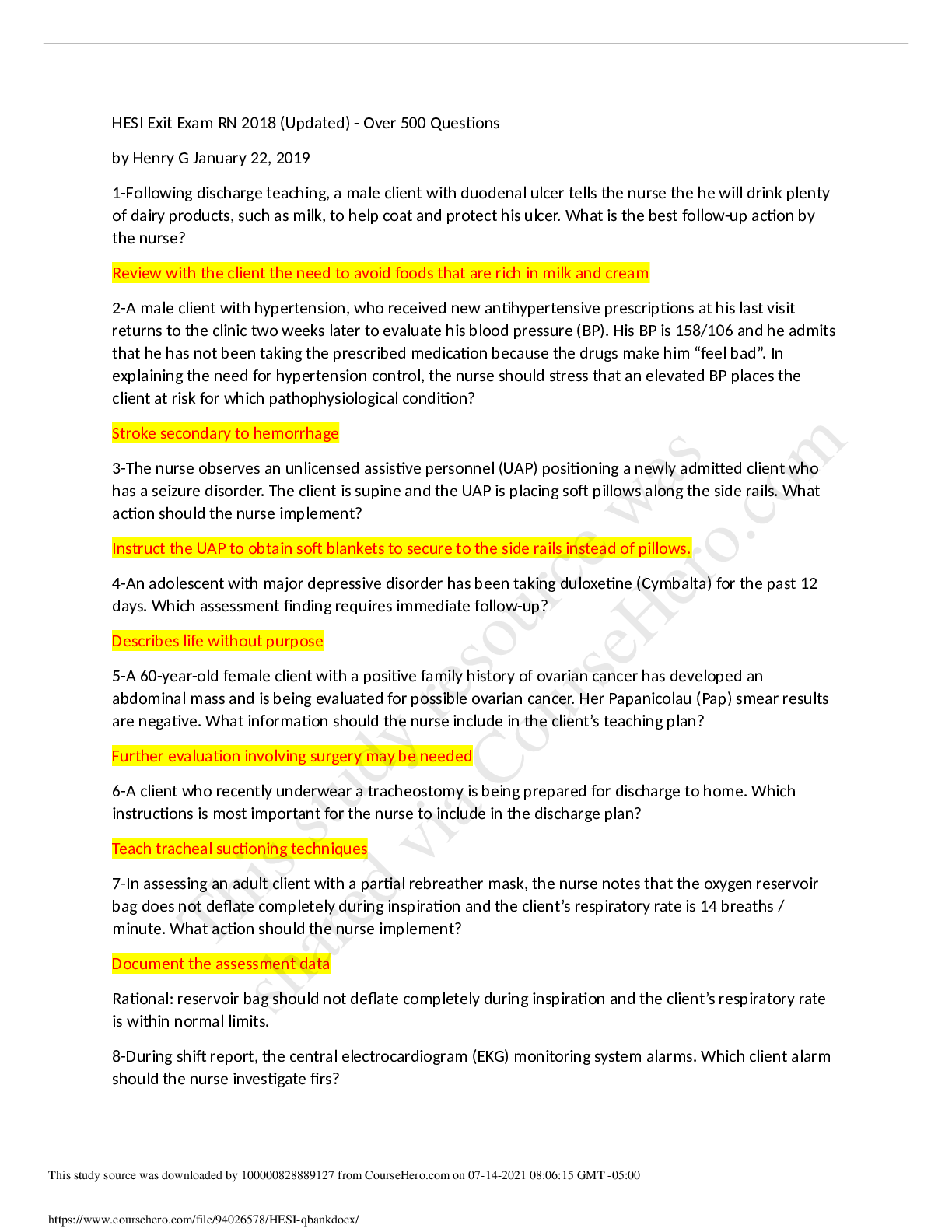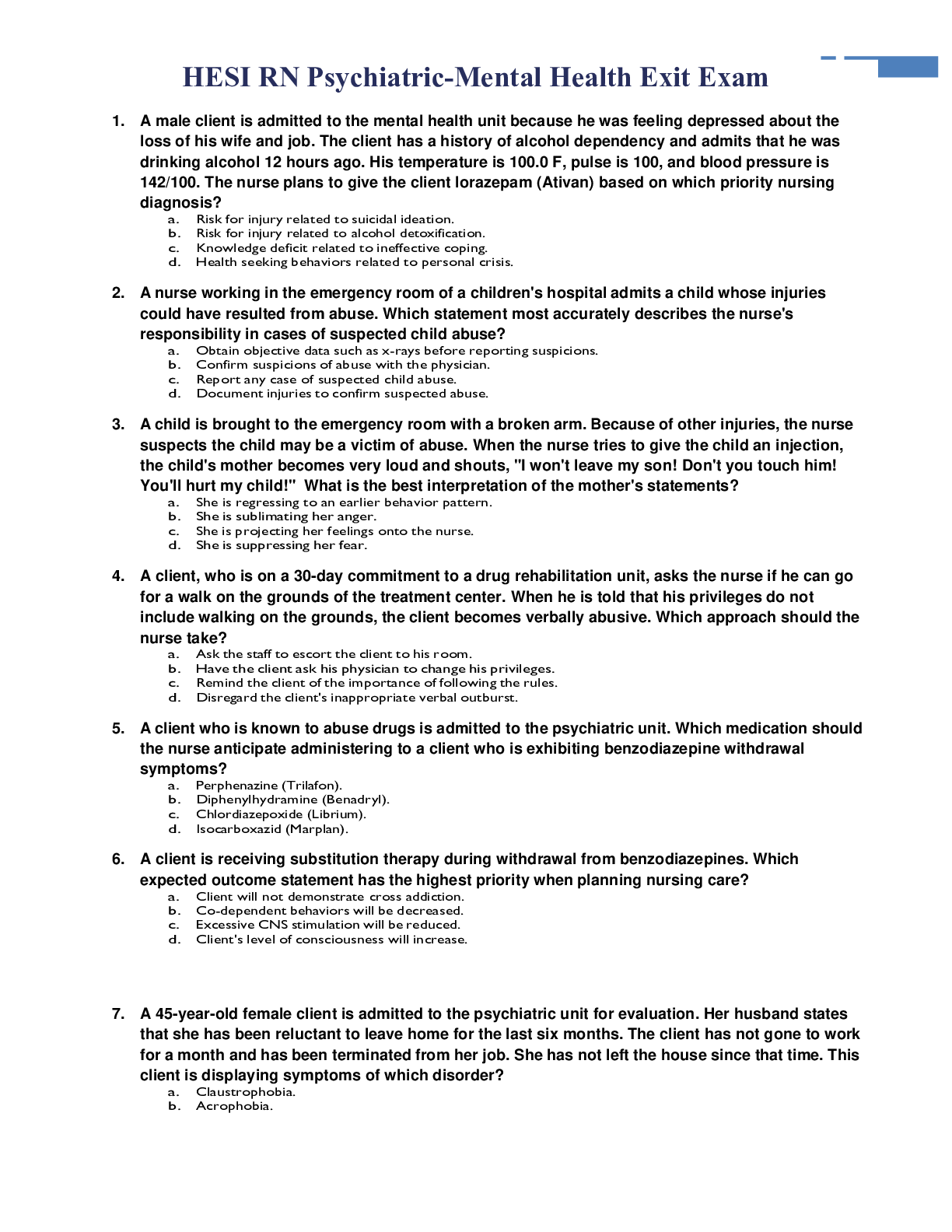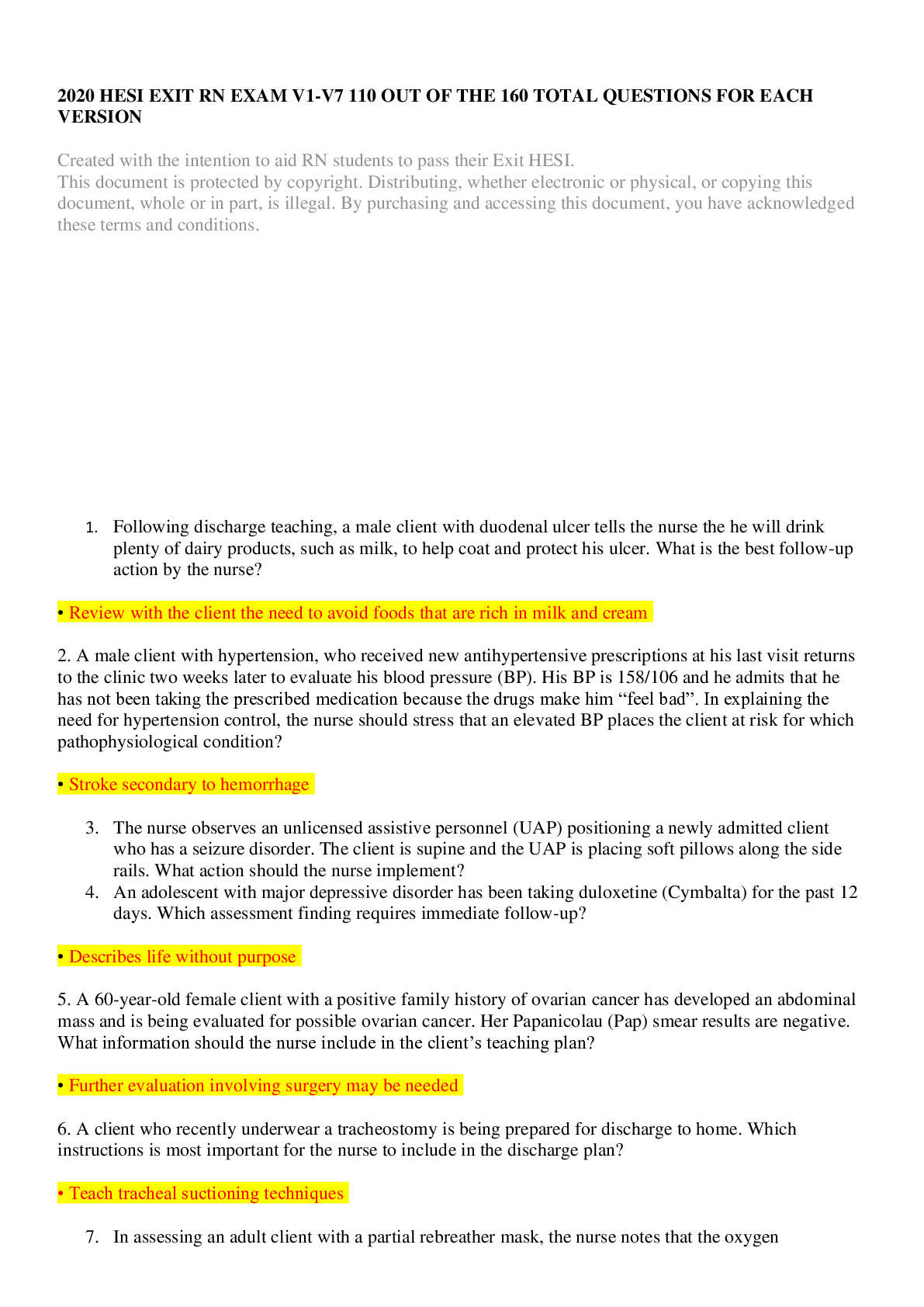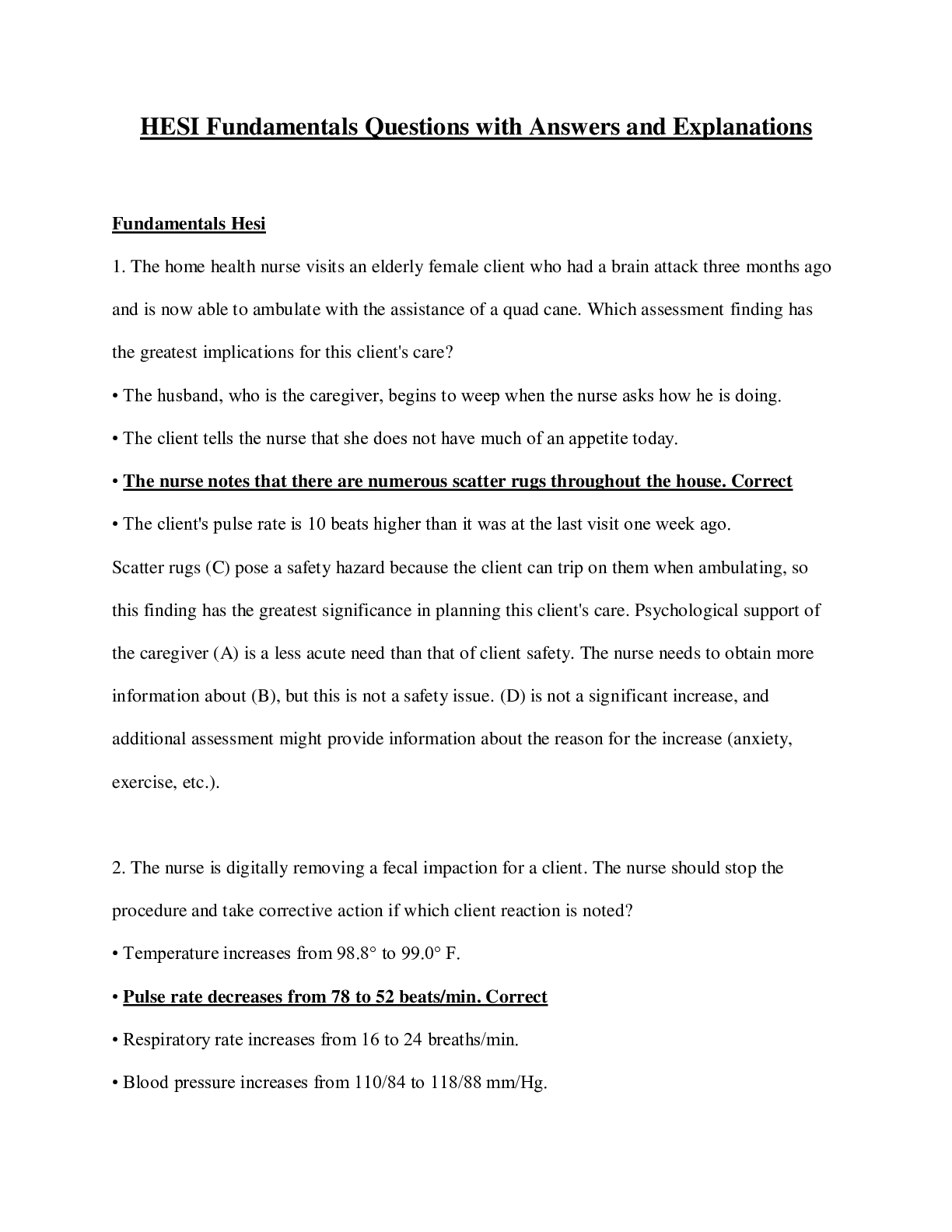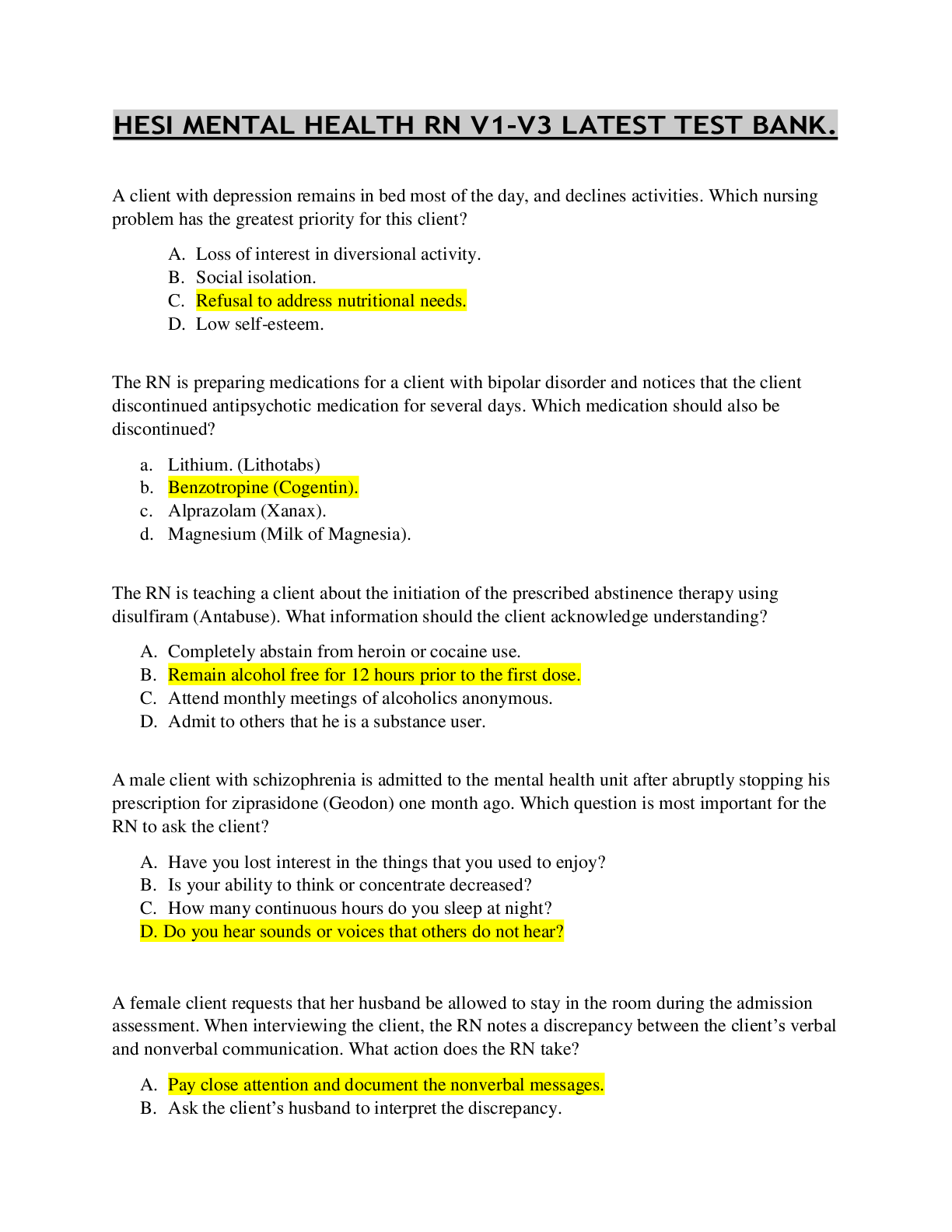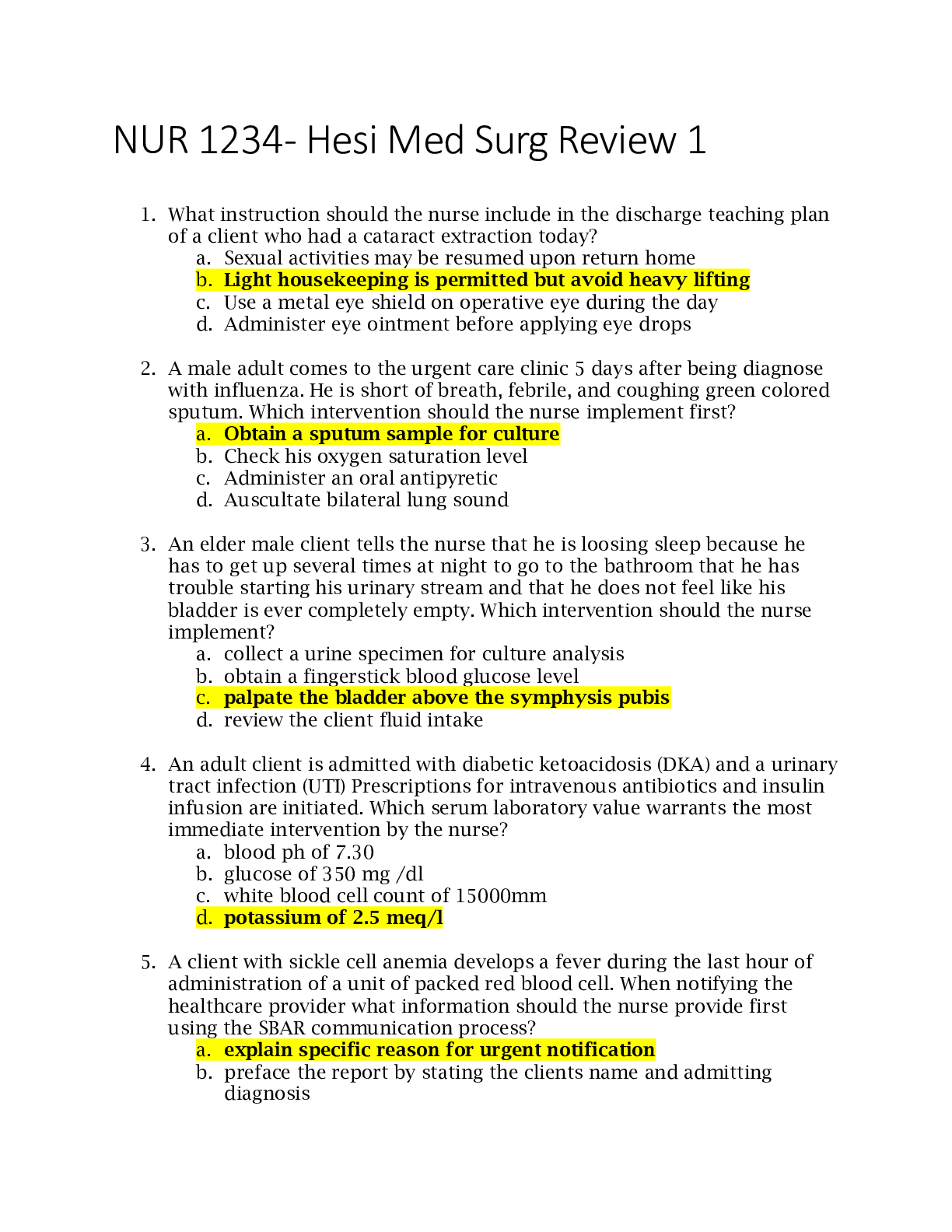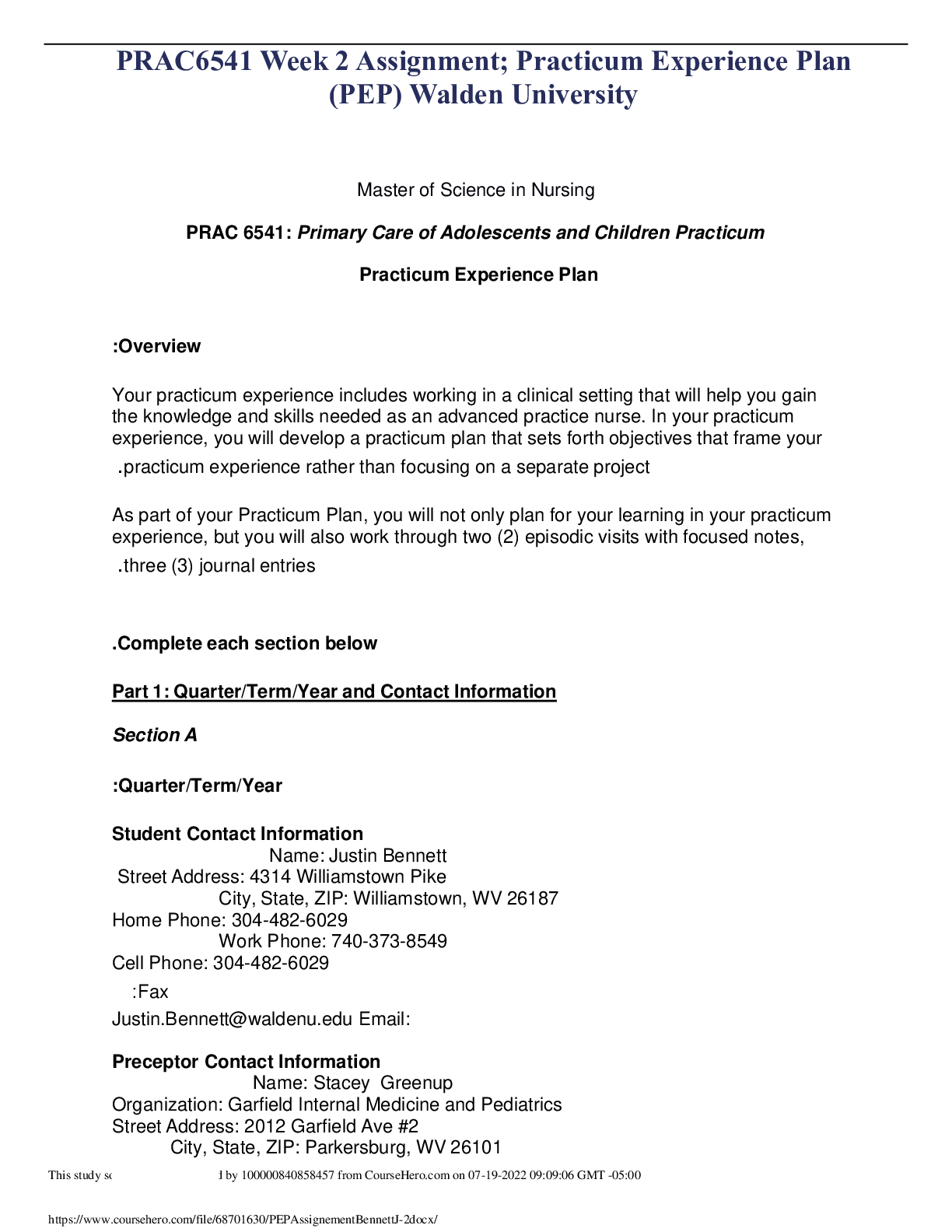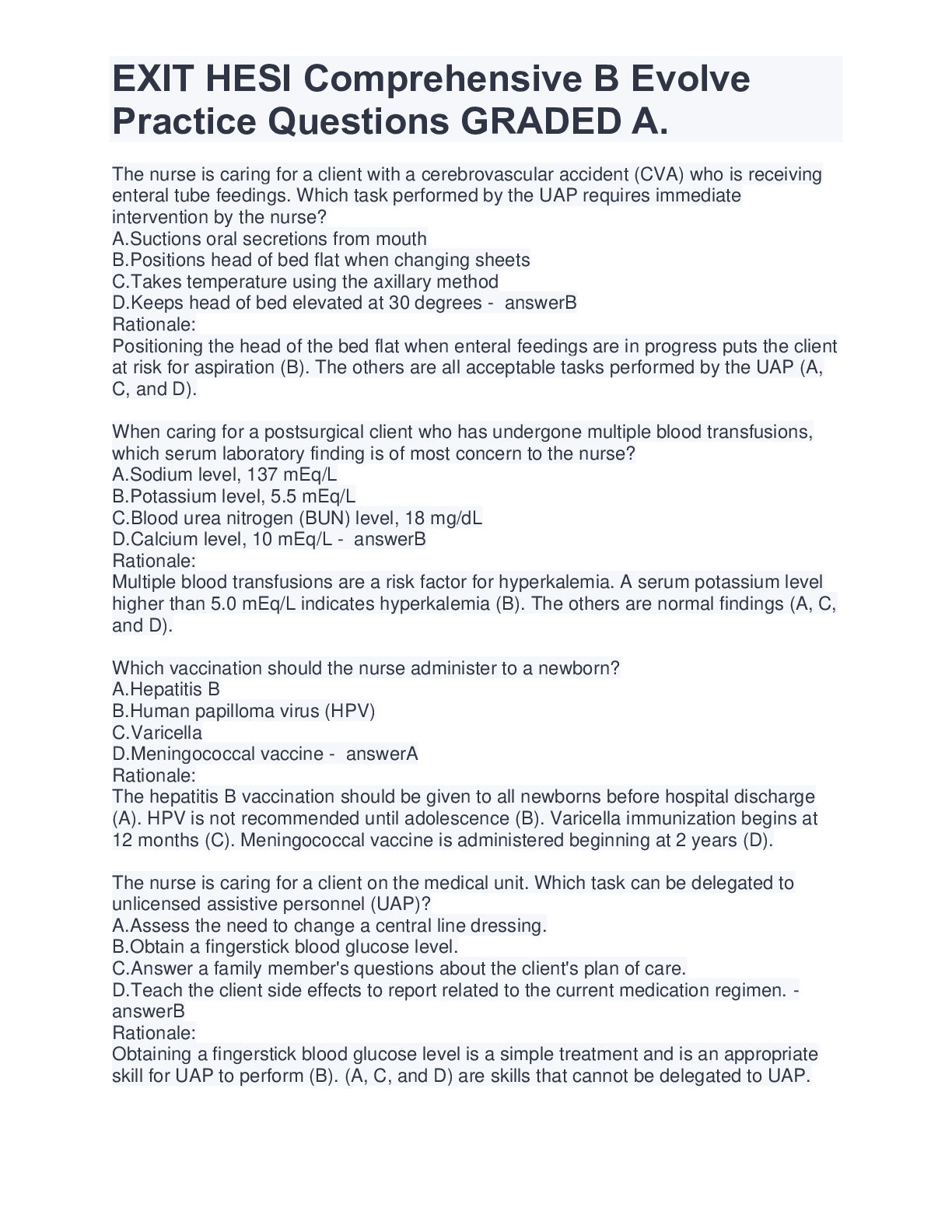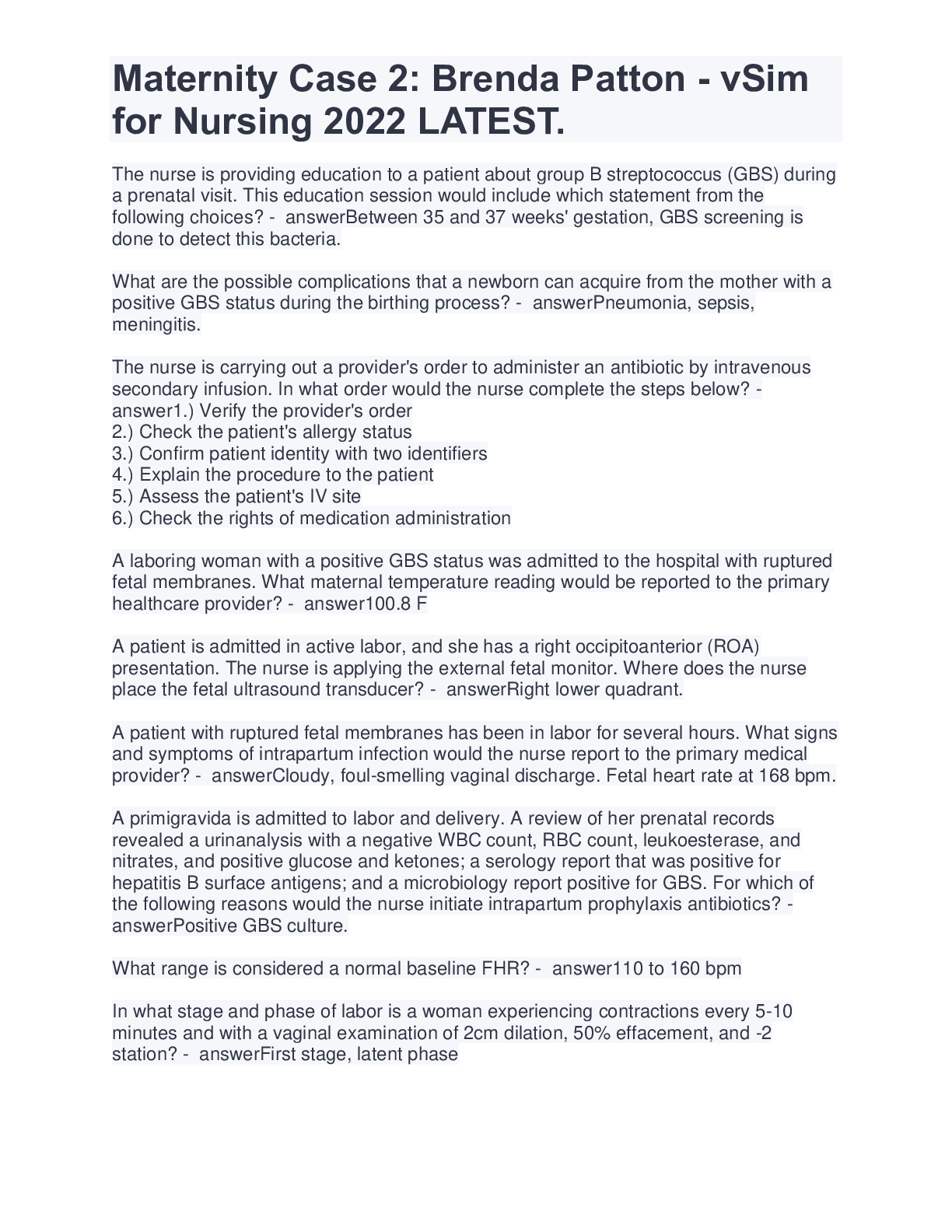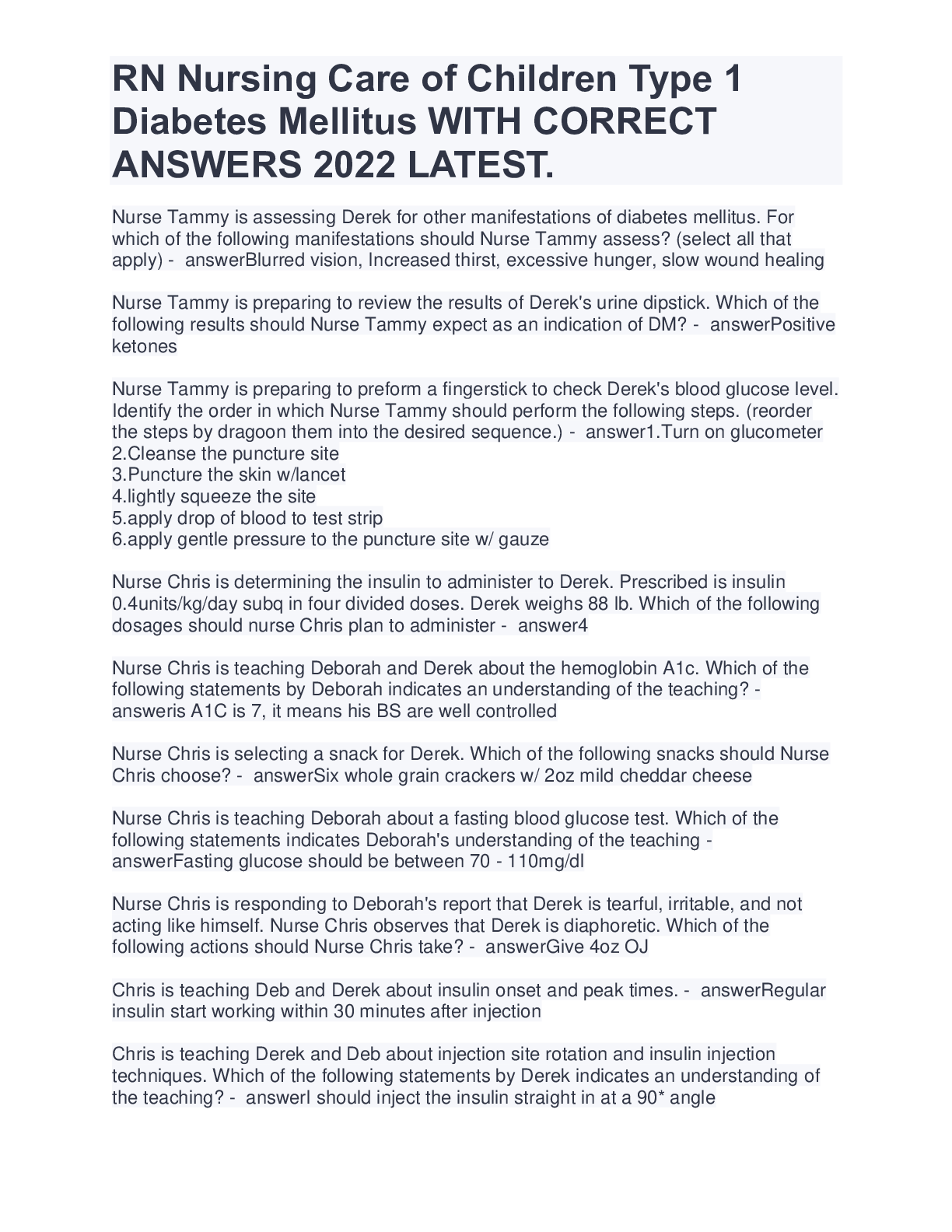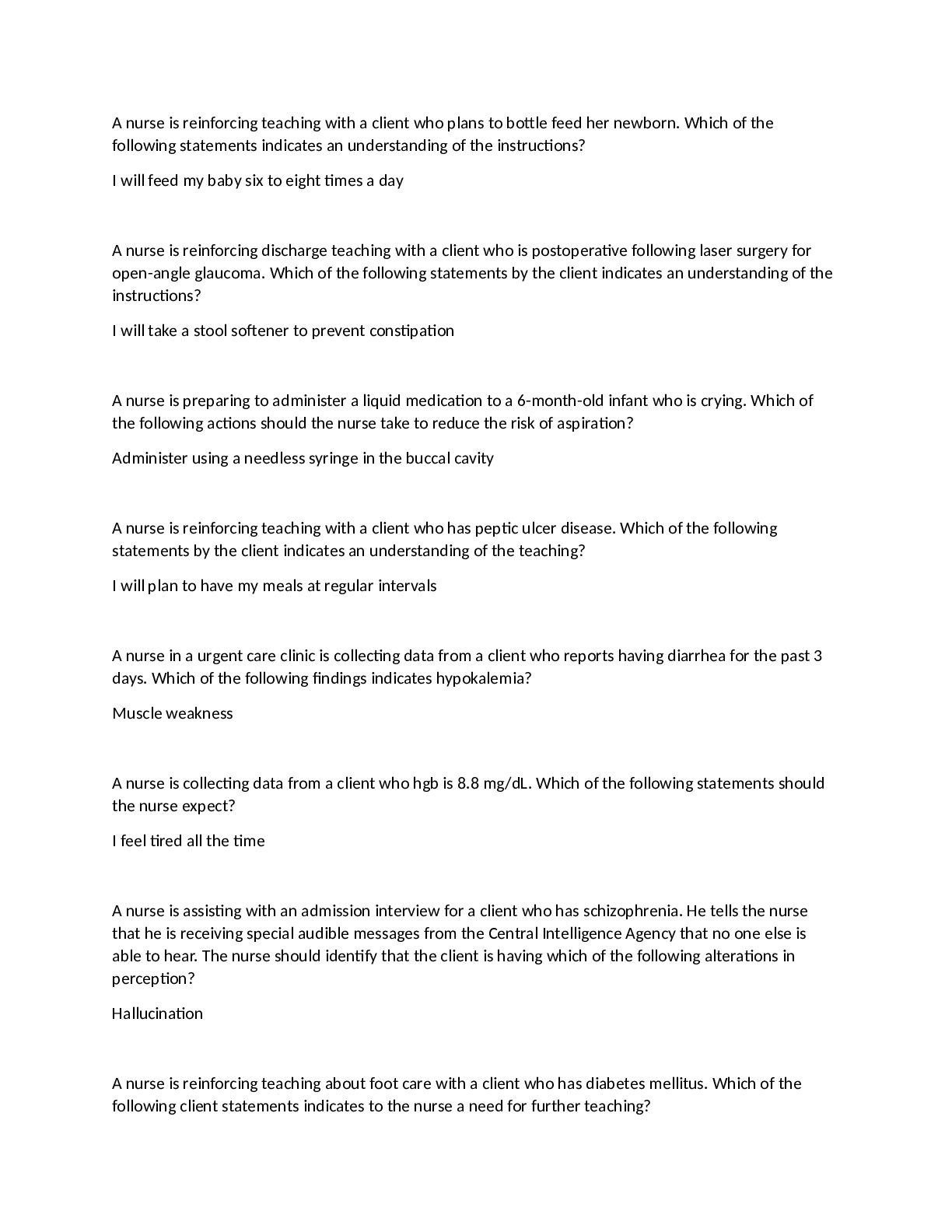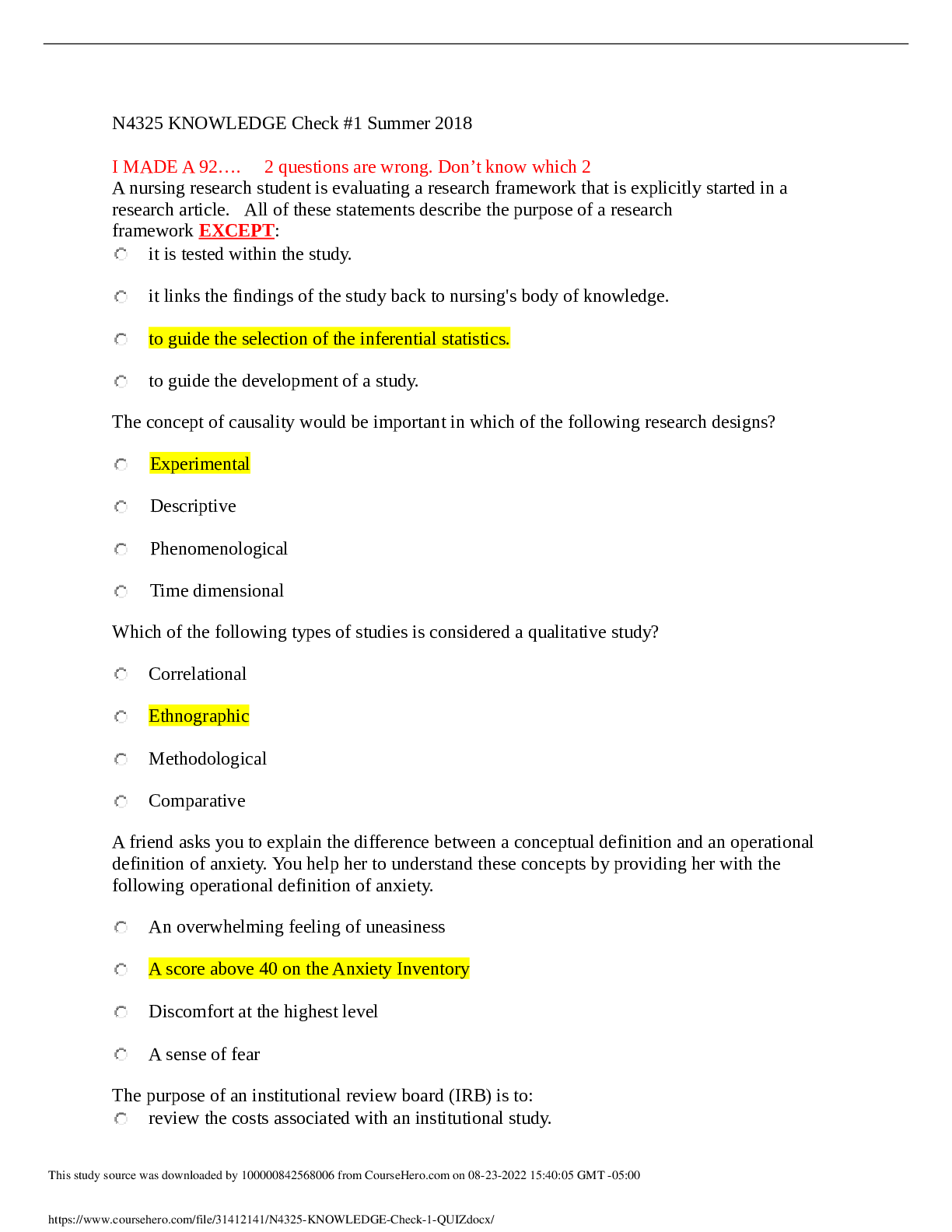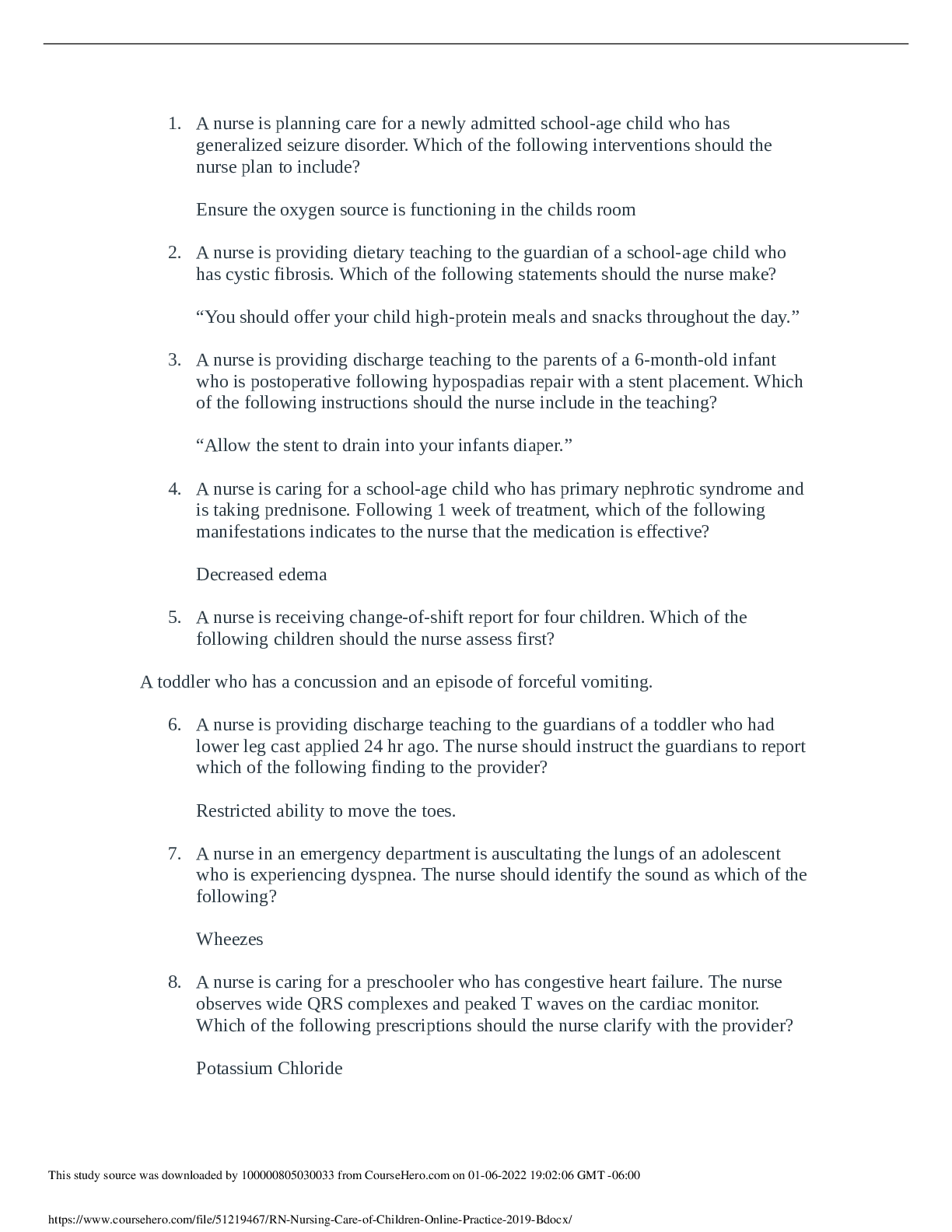docx (2).,WELL EXPLAINED WITH CORRECT ANSWERS GRADED A.
Document Content and Description Below
Randy Adamsthe case of Randy Adams, he is suffering from some PTSD related to the TBI. As stated in this week’s lesson, “Any blow, jolt, or penetrating head injury that results in the disruption t... o the normal function of the brain is referred to as a traumatic brain injury. Due to the complexity of the brain, every injury to the brain is different. Symptoms and recovery times will be individualized and can vary greatly depending on the severity of the injury (Jarvis, 2016).” Treatment for a concussion can include basic resting through medication for the headache that may come with it. Avoiding general physical exertion, including sports or any vigorous activities, until you have no symptoms. This rest also includes restrictive activities that require thoughtful and psychological concentration, such as playing on the computer, school work, reading, video games, texting, and watching TV. “A stroke, or cerebrovascular accident (CVA), occurs when the blood flow is interrupted to a part of the brain, which is why it is often referred to as a brain attack. According to the National Institutes of Health (NIH), strokes are the leading cause of long-term disability and the 4th leading cause of death after heart disease and cancer” (NIHSS). The main Neurological assessment tools used in a hospital is the NIHSS. As explained by one source “The National Institutes of Health Stroke Scale (NIHSS) is a systematic assessment tool that provides a quantitative measure of stroke-related neurologic deficit. The NIHSS was originally designed as a research tool to measure baseline data on patients in acute stroke clinical trials. Now, the scale is also widely used as a clinical assessment tool to evaluate acuity of stroke patients, determine appropriate treatment, and predict patient outcome” (NIHSS). As explained in the lesson “Post-traumatic stress disorder (PTSD) can develop whenever an individual has experienced a traumatic event involving real or threatened death such as with military combat, terrorist attacks, assault, serious accidents, and natural disasters (Jarvis, 2016).” Present practices connected with post-traumatic stress disorder (PTSD) include both psychiatric help and medications. Nursing interventions I would include in Randy’s POC would be Neurological checks every 2 to 4 hours to monitor any variations from his baseline. The neuro checks would open the chance to conversate with Randy about his plans after discharge, which could potentially open the chance to educate him further about his circumstances. I would also implement relaxation techniques that he can use while in the hospital as well as at home. Stress relief through relaxation may help Randy bounce back from a ride down memory lane. References Jarvis, C. (2016). Physical examination & health assessment (7th ed.). Philadelphia, PA: Saunders. NIH Stroke Scale International. (n.d.). Retrieved July 19, 2017, from http://www.nihstrokescale.org/ What, if any, experience might you be able to discuss regarding blast or explosive incidents and the diagnosis of mild TBI/concussion? Hello Professor, I have had experience with TBI’s mostly after MVA’s or falls, but not with explosions, yet. One of the main disturbances with TBI’s that I have seen is their impulsive behaviors and their regression back to toddler-like activities. I can remember my very first TBI patient. He was a 36 year old that had gone out for a bike ride (motorcycle) with no helmet, unfortunately, and ran into the back of a semi at full speed. He had a fiancé with a baby on the way (less than a month) and he had no recollection of her or his family. It was the most overwhelming and emotional case ever, because he had no clue to the heartbreak his family was going through. He was very impulsive and would try to get out of bed on his own. He would pull out his IV’s and Foley catheter and just gave everyone a hard time. He was beyond obsessed with his “private part” and would let everyone know when he was having “his time”. Overall, he would play peek-a-boo with his sheets and getting him to eat was a job in itself. He made very small improvements on a daily basis but not to the point of his baseline over the 3 months he spent on the unit. In regards to blast and explosive incidents, one source explains that “Blasts from various forms of improvised explosive devices (IEDs) are a common cause of combat-related injury in the military and were the most common cause of combat-related concussions during Operation Enduring Freedom and Operation Iraqi Freedom.” It goes further to explain that “There are four different mechanisms through which a blast can cause injury: Primary injury: Atmospheric over-pressure followed by under-pressure or vacuum, Secondary injury: Objects placed in motion (shrapnel) by the blast hitting the service member, Tertiary injury: Service member being thrown by the blast and hitting their head against the ground, a wall, or other solid surface, and Quaternary injury: Other injuries from the blast such as burns and crush injuries.” The treatment as well as most symptoms with all TBI’s are just about the same. They are not easy patients to deal with and it takes a ton of patience to care for them and their family. Reference Blast Injuries. (2016). Retrieved September 17, 2016, from http://dvbic.dcoe.mil/about-traumatic-brain-injury/article/blast-injuries [Show More]
Last updated: 1 year ago
Preview 1 out of 3 pages
.png)
Reviews( 0 )
Document information
Connected school, study & course
About the document
Uploaded On
May 14, 2021
Number of pages
3
Written in
Additional information
This document has been written for:
Uploaded
May 14, 2021
Downloads
0
Views
34

